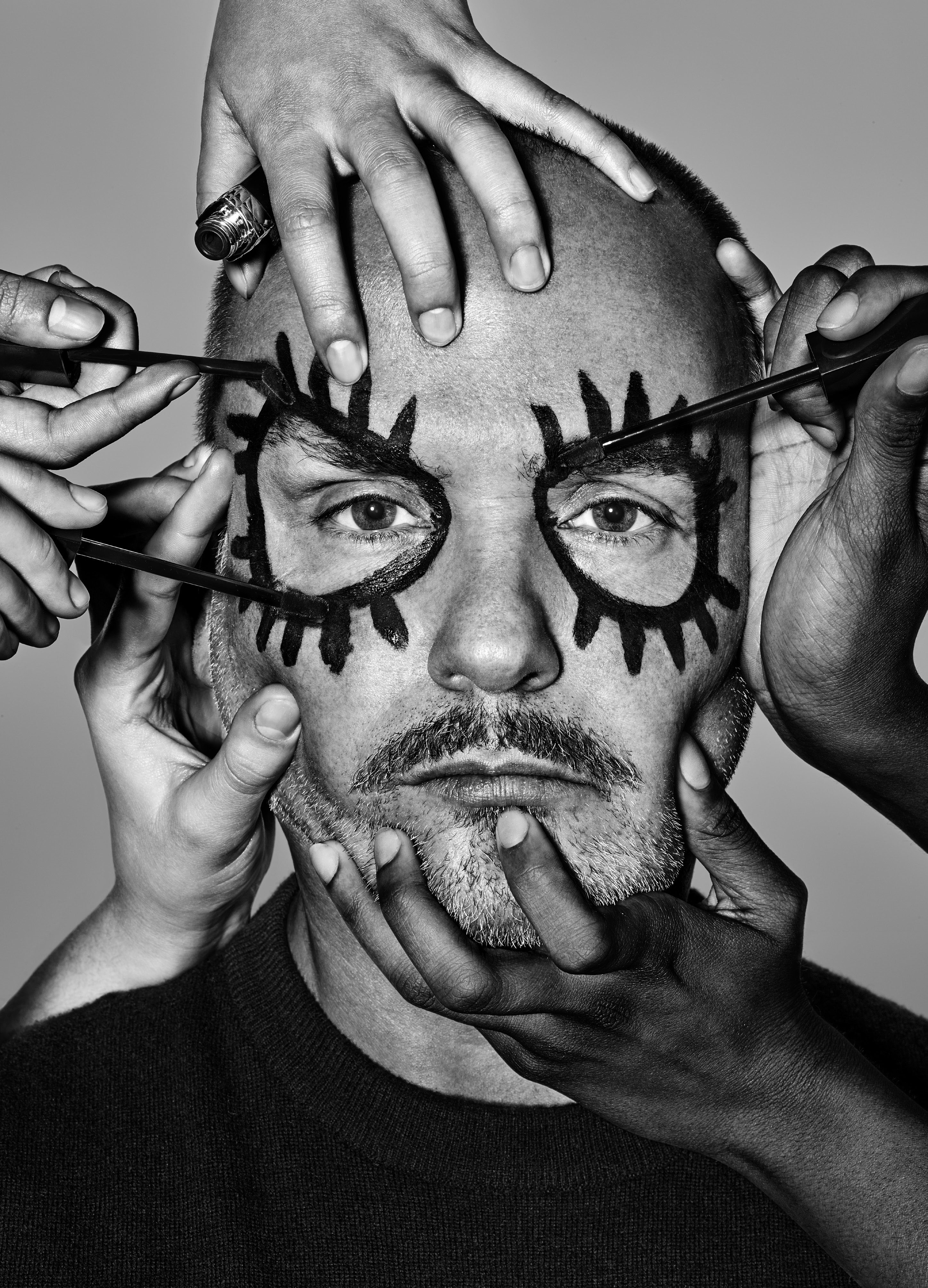O — Your breakout moment was a shoot with Irving Penn in 2005, with the Mickey Mouse mask for Lisa Cant. It became an iconic image. Can you tell me about that day, and why you used Mickey Mouse?
PP — It’s very pop art, in a way. It’s associated with everybody’s childhood. At the same time it looks cool on every age, when you get a shirt with a Mickey Mouse. It’s something that evokes good times, but at the same time it’s very graphic. We put it next to the Coca- Cola logo or Supreme, that kind of thing, and it’s eyecatching, visual communication. Visual language, almost. I only did two Mickey Mouse’s in my whole career. The first one I think was for a shoot we did with Olivier Rizzo where we were able to use Raf Simons’ clothes, and then it was actually used in issue zero of V Magazine. The issue that was printed out to send to potential advertisers, I think, before the first issue came out. I made a mask first on another shoot with Mr. Penn. I love making masks, and Olivier Theyskens had given me a beautiful piece of lace which I used for a few shoots for i-D. On the first shoot with Mr. Penn, I had in my case a beautiful antique lace object which I turned into an eye mask. Then I see a piece of lapel from my great-grandmother that my grandma gave me. So I make it into a little beautiful eye mask, with black check pearls, gold and diamond on the cheek.
It was a beautiful picture, actually. That picture got me my Chanel contract. I was playing around and I made myself a Mickey Mouse mask, and I carried it around for a while. And then, for the big September issue of American Vogue, they were missing one page of beauty. I got a phone call from my agent, like, Okay, they’re missing a beauty picture for American Vogue and they want the guy who did the lace masks. They asked if I had any more. And so, I sent Phyllis a few masks that I made, she showed them to Mr. Penn, and they picked the Mickey Mouse mask.
We shot it on a Saturday, which is kind of exceptional for Mr. Penn, to shoot on the weekend. The weather was bad and we were all hoping to be able to shoot in daylight, because for Mr. Penn, daylight makes the pictures look like paintings. But it was a really, really, droopy, rainy day. I put the mask on, Julien d’Ys did fantastic hair. And the moment Lisa Cant, the model, came out of the makeup area, the clouds broke open and it was the most amazing light. So, Mr. Penn started shooting. We shot, shot, shot, shot, and I got a print at home and I love it still. It was just so beautiful that day. Everything was perfect. It was a masterpiece.
